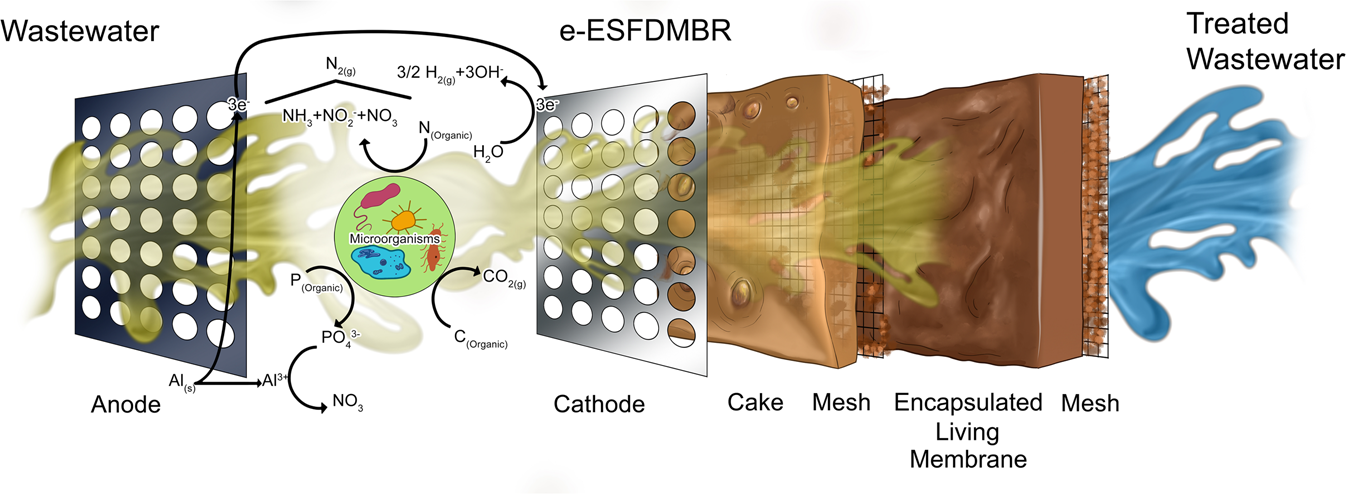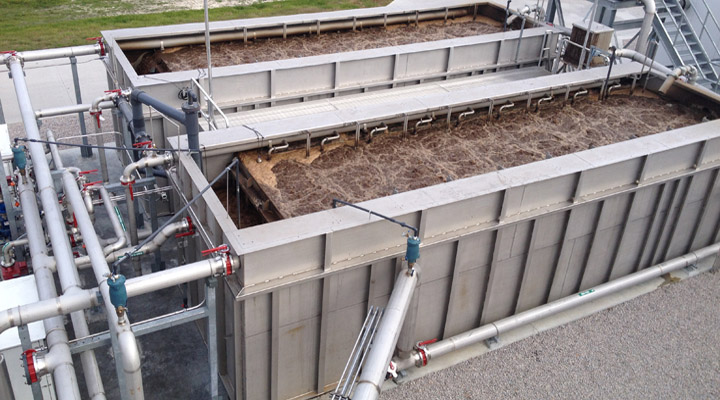Exploring the Environmental Impact of Membrane Bioreactor in Wastewater Treatment
Wiki Article
Exactly How Membrane Layer Bioreactors Are Revolutionizing Water Purification Systems
The introduction of membrane layer bioreactors (MBRs) stands for a substantial innovation in the area of water filtration, combining organic therapy procedures with innovative membrane layer filtering innovations. As worldwide water shortage heightens, the duty of MBRs in facilitating potable water reuse and lasting water monitoring comes to be significantly essential.Review of Membrane Layer Bioreactors
Membrane bioreactors (MBRs) stand for a substantial improvement in water purification technology, as they combine organic therapy procedures with membrane layer filtration. This integration improves the efficiency of wastewater treatment by utilizing microbes to break down organic toxins while all at once utilizing semi-permeable membrane layers to different cured water from put on hold solids and pathogens.The MBR system normally includes a biological reactor where the microbial population metabolizes pollutants, followed by a membrane layer purification system that retains biomass and enables only tidy water to go through. This twin performance results in greater effluent quality contrasted to traditional therapy methods. MBRs can be run in both batch and constant flow settings, providing adaptability in design and application.
They additionally make it possible for the recovery of water for reuse, thus contributing to water sustainability campaigns. Overall, MBRs are at the forefront of improving water treatment effectiveness and high quality, showcasing the possibility for innovative solutions in environmental administration.
Advantages of MBR Innovation
The combination of organic therapy with membrane layer filtration offers numerous benefits for water purification processes. One of the key benefits of Membrane layer Bioreactor (MBR) technology is its capability to effectively remove both organic and not natural pollutants, causing high-grade effluent. The membrane layers serve as a physical barrier, stopping suspended solids and pathogens from passing through, which enhances the overall security and dependability of treated water.Additionally, MBR systems require a smaller sized impact compared to conventional treatment methods, enabling more reliable area application. This portable style is particularly advantageous in city settings where land is limited. MBRs likewise demonstrate functional versatility, accommodating differing influent high qualities and flow rates without substantial efficiency degradation.
In addition, the procedure offers boosted nutrient elimination abilities, particularly for nitrogen and phosphorus, which are essential for stopping eutrophication in receiving waters. The lowered sludge manufacturing related to MBR innovation additionally equates to lower disposal expenses, making it an economical service in the future - Membrane Bioreactor. On the whole, the advantages of MBR modern technology position it as a leading option for lasting and innovative water purification systems, resolving both environmental and financial concerns
Applications in Water Filtration
Applications of Membrane Bioreactor (MBR) modern technology in water purification are diverse and impactful, addressing different treatment needs throughout multiple markets. MBRs properly incorporate organic treatment processes with membrane purification, making them excellent for community wastewater treatment, industrial effluent management, and also safe and clean water reuse efforts.In community settings, MBRs are progressively utilized to boost the top quality of dealt with wastewater, permitting compliance with strict discharge guidelines and promoting the recycling of water for watering and non-potable usages. Their portable layout also makes them ideal for city settings where room is restricted.
Industrially, MBR modern technology is made use of to deal with procedure water and wastewater, specifically in markets such as food and drink, pharmaceuticals, and textiles. By efficiently eliminating contaminants and suspended solids, MBRs aid sectors decrease ecological effects while recuperating valuable sources from wastewater streams.
Furthermore, MBRs are gaining grip in decentralized water therapy applications, where small-scale systems can be released in remote locations or establishing regions. This flexibility makes it possible for neighborhoods to achieve sustainable water monitoring options, improving access to tidy water while lowering dependence on conventional therapy approaches.
Study and Success Stories

In an additional example, a fabric manufacturing center in Bangladesh embraced MBR technology to address its wastewater obstacles. The system minimized chemical oxygen need (COD) levels from 1,200 mg/L to much less than 100 mg/L, therefore fulfilling regulative criteria and dramatically reducing ecological impact.
The College of Cape Town's MBR setup has actually shown effective in treating greywater for non-potable reuse on university. This project not just preserves drinkable water yet also functions as an educational design for lasting practices.
Moreover, a fish and shellfish processing plant in Norway used MBR modern technology to treat effluents consisting of high degrees of organic matter, attaining over 90% toxin removal. These instance researches underscore MBR innovation's convenience and its vital function in improving water top quality across diverse applications.
Future of Water Treatment Solutions
As international water deficiency and pollution challenges heighten, cutting-edge water therapy solutions are ending up being progressively crucial to ensure sustainable access to clean water. The future of water treatment hinges on the combination of sophisticated innovations that boost the performance and performance of filtration procedures. Membrane bioreactors (MBRs) are at the leading edge of this development, integrating biological treatment with Go Here membrane filtration to produce premium effluent appropriate for different applications.
Arising patterns such as resource recovery from wastewater, including nutrients and power, will certainly better change treatment facilities right into green centers. Improvements in nanotechnology and membrane products guarantee improved efficiency and durability of filtration systems.

Conclusion
To conclude, membrane bioreactors stand for a considerable advancement in water filtration innovations, effectively integrating biological therapy with advanced membrane layer filtration. The many advantages, consisting see this of enhanced effluent top quality and lowered spatial requirements, make MBRs especially appropriate for urban applications. Their duty in potable water reuse and lasting water management highlights their value in addressing worldwide water scarcity difficulties. Proceeded r & d will even more boost the efficacy and adoption of MBR modern technology, ensuring a durable future for water therapy solutions.The development of membrane bioreactors (MBRs) represents a considerable innovation in the area of water filtration, combining organic therapy procedures with cutting-edge membrane filtration technologies. As global water shortage increases, the function of MBRs in promoting safe and clean water reuse and lasting water monitoring ends up being progressively essential. They likewise allow the healing of water for reuse, therefore adding to water sustainability campaigns.As global water scarcity and air pollution obstacles escalate, cutting-edge water therapy services are becoming increasingly essential to ensure lasting accessibility to clean water. Their function in potable water reuse and lasting water monitoring highlights their value in dealing with global water deficiency difficulties.
Report this wiki page